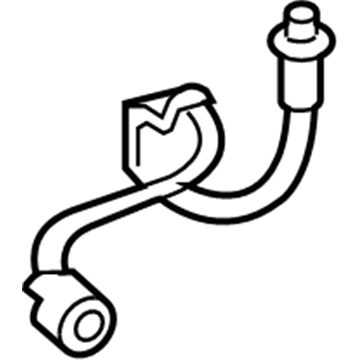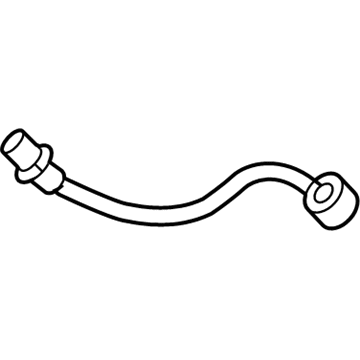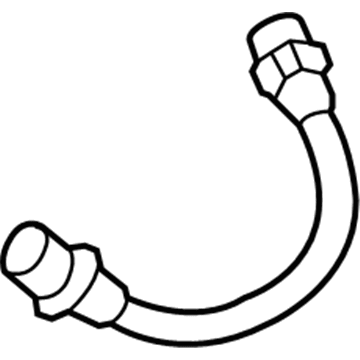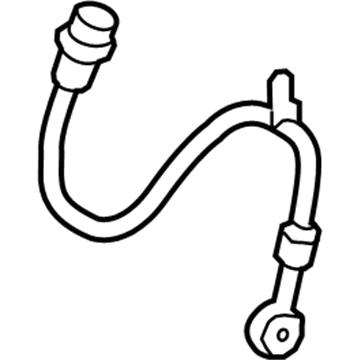×
ToyotaParts- Hello
- Login or Register
- Quick Links
- Live Chat
- Track Order
- Parts Availability
- RMA
- Help Center
- Contact Us
- Shop for
- Toyota Parts
- Scion Parts
My Garage
My Account
Cart
OEM 2009 Toyota Corolla Brake Line
Brake Hose- Select Vehicle by Model
- Select Vehicle by VIN
Select Vehicle by Model
orMake
Model
Year
Select Vehicle by VIN
For the most accurate results, select vehicle by your VIN (Vehicle Identification Number).
5 Brake Lines found
2009 Toyota Corolla Flex Hose, Front Driver Side
Part Number: 90947-A2078$86.85 MSRP: $121.91You Save: $35.06 (29%)Ships in 1-3 Business DaysProduct Specifications- Other Name: Hose, Flexible; Brake Hydraulic Hose, Front Left; Brake Hose; Brake Line; Hose, Flexible(For Front); Brake Hydraulic Hose; Hydraulic Hose
- Position: Front Driver Side
- Replaces: 90947-02E78, 90947-A2026
- Part Name Code: 47313J
- Item Weight: 0.70 Pounds
- Item Dimensions: 7.4 x 6.4 x 1.5 inches
- Condition: New
- Fitment Type: Direct Replacement
- SKU: 90947-A2078
- Warranty: This genuine part is guaranteed by Toyota's factory warranty.
2009 Toyota Corolla Flex Hose, Front Passenger Side
Part Number: 90947-A2077$86.85 MSRP: $121.91You Save: $35.06 (29%)Ships in 1-3 Business DaysProduct Specifications- Other Name: Hose, Flexible; Brake Hydraulic Hose, Front Right; Brake Hose; Brake Line; Hose, Flexible(For Front); Hydraulic Hose
- Position: Front Passenger Side
- Replaces: 90947-02E76, 90947-A2025
- Part Name Code: 47313A
- Item Weight: 0.70 Pounds
- Item Dimensions: 7.1 x 6.4 x 1.6 inches
- Condition: New
- Fitment Type: Direct Replacement
- SKU: 90947-A2077
- Warranty: This genuine part is guaranteed by Toyota's factory warranty.
2009 Toyota Corolla Flex Hose, Rear
Part Number: 90947-A2029$46.71 MSRP: $65.02You Save: $18.31 (29%)Ships in 1-3 Business DaysProduct Specifications- Other Name: Hose, Flexible; Brake Hydraulic Hose, Rear; Brake Hose; Brake Line; Hose, Flexible(For Rear Passenger Side); Hose, Flexible(For Rear Driver Side); Hydraulic Hose
- Position: Rear
- Replaces: 90947-02E75
- Item Weight: 0.70 Pounds
- Item Dimensions: 7.2 x 6.1 x 1.6 inches
- Condition: New
- Fitment Type: Direct Replacement
- SKU: 90947-A2029
- Warranty: This genuine part is guaranteed by Toyota's factory warranty.
2009 Toyota Corolla Flex Hose, Rear Driver Side
Part Number: 90947-A2024$66.82 MSRP: $93.80You Save: $26.98 (29%)Ships in 1-3 Business DaysProduct Specifications- Other Name: Hose, Flexible; Brake Hydraulic Hose, Rear Left; Brake Hose; Brake Line; Hose, Flexible(For Rear Driver Side); Hydraulic Hose
- Manufacturer Note: MEXICO SPEC
- Position: Rear Driver Side
- Replaces: 90947-02E80
- Part Name Code: 47319F
- Item Weight: 0.70 Pounds
- Item Dimensions: 7.1 x 6.1 x 1.5 inches
- Condition: New
- Fitment Type: Direct Replacement
- SKU: 90947-A2024
- Warranty: This genuine part is guaranteed by Toyota's factory warranty.
2009 Toyota Corolla Flex Hose, Passenger Side
Part Number: 90947-A2023$71.56 MSRP: $100.45You Save: $28.89 (29%)Ships in 1-3 Business DaysProduct Specifications- Other Name: Hose, Flexible; Brake Hydraulic Hose, Rear Right; Brake Hose; Brake Line; Hose, Flexible(For Rear Passenger Side); Hydraulic Hose
- Manufacturer Note: MEXICO SPEC
- Position: Passenger Side
- Replaces: 90947-02E79
- Part Name Code: 47318F
- Item Weight: 0.70 Pounds
- Item Dimensions: 7.1 x 6.3 x 1.6 inches
- Condition: New
- Fitment Type: Direct Replacement
- SKU: 90947-A2023
- Warranty: This genuine part is guaranteed by Toyota's factory warranty.
2009 Toyota Corolla Brake Line
Looking for affordable OEM 2009 Toyota Corolla Brake Line? Explore our comprehensive catalogue of genuine 2009 Toyota Corolla Brake Line. All our parts are covered by the manufacturer's warranty. Plus, our straightforward return policy and speedy delivery service ensure an unparalleled shopping experience. We look forward to your visit!
2009 Toyota Corolla Brake Line Parts Q&A
- Q: How to service and repair the front Brake Line on 2009 Toyota Corolla?A: Service of the front brake flexible hose demands brake fluid drainage followed by quick paint surface washing after fluid contact. Next, remove the front wheel. The front flexible hose requires removal by disconnecting its union bolt followed by removal of the gasket to detach the hose. You should disconnect the brake line by using a union nut wrench (10 mm) while using another wrench to maintain grip of the front flexible hose and keeping brake line alignment while avoiding both kinking and braking damage to prevent foreign material from entering the brake line through the clip or bracket. The front flexible hose can be separated from the absorber bracket by removing both the clip and the bolt. Connectors for the RH side and LH side hoses should be marked with position markers when disconnecting them at the same time.


















